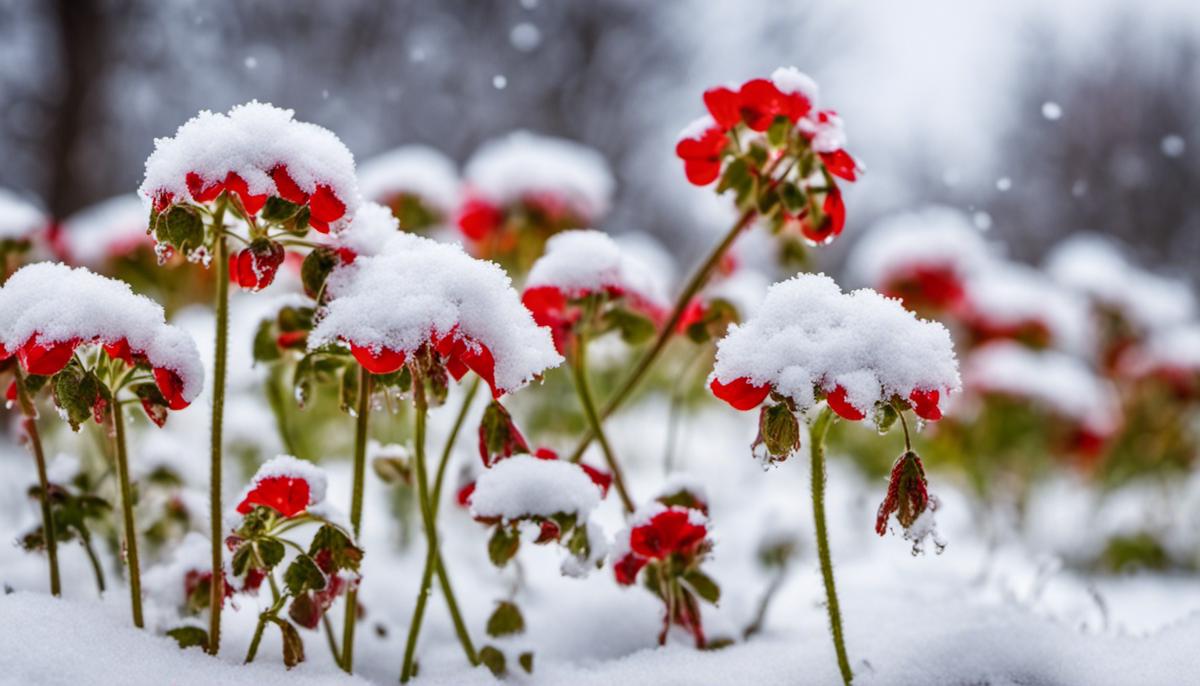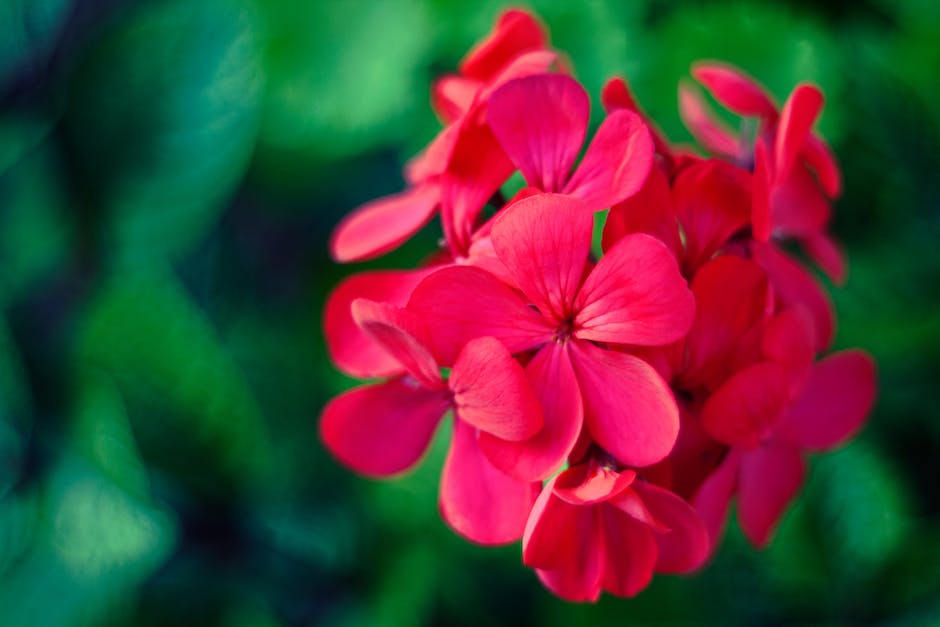Winterize Your Geraniums: Complete Guide

Geraniums, with their vibrant blossoms and lush foliage, add a touch of classic beauty to any garden or windowsill. However, as the seasons change, these perennial plants need extra care and attention in order to ensure their survival through the chilly winter months. This comprehensive guide will walk you through understanding the intricate process of geranium dormancy, providing essential indoor care, and successfully reawakening your geraniums for a lush growth post-winter. You’ll gain an understanding of the physiological changes these plants undergo in response to colder weather, the perfect conditions needed for their indoor sojourn, and the steps needed to nudge them out of their sleepy state when spring comes calling.
Understanding Geranium Dormancy
Geranium Dormancy: A Fascinating Winter Transformation
Winter months might be associated with hot cocoa, cozy blankets, and snowball fights for most people, but for geranium enthusiasts, it signals an altogether different season – the curious phase of geranium dormancy. This fascinating biological process has intrigued green thumbs for centuries, and it’s about time we delve into just what it entails and why it’s key to your geranium’s survival during those frosty months.
First off, what is this ‘geranium dormancy’, you might ask? Geranium dormancy is essentially a phase of ‘deep sleep’ that geraniums enter to cope with extreme winter conditions. When temperatures drop and daylight hours shorten, the plant understands it as a signal to conserve energy, resulting in a drastic slow down of its metabolic processes. This ‘quiet time’ is a normal part of the geranium’s lifecycle.
Folks often ask, “How does this dormancy affect the plant?” The answer is compellingly simple. Just as a bear hibernates to survive harsh winters, the geranium’s dormancy is a means of survival too. During this period, the plant stops growing and may even lose its leaves, giving it a somewhat forlorn appearance. Don’t fret, though! The geranium isn’t dying – it’s simply hunkering down and conserving energy to ensure it pulls through the winter.
You might see a drastic slowdown, or even complete halt, of new leaf and flower growth. The plant doesn’t waste precious energy on these endeavors but channels what it has into staying alive. Its main focus shifts from growth to keeping vital structures like roots and stems alive until more favorable conditions return with spring.
Now that the concept of dormancy is clarified, you’re probably pondering, “So, how can one cater to a dormant geranium?” Here, understanding the functional shift in the plant’s needs becomes vital. When your geraniums enter this dormancy phase, reduce watering significantly. Since the plant is not actively growing, it doesn’t require as much water. Overwatering during this period can lead to root rot – a silent assassin in the world of gardening.
Regarding lighting, even though the plant is dormant, it will still appreciate some sunshine. Ensure your geranium gets somewhat limited exposure to light during the winter months. If your geraniums are potted and indoors, consider moving them near a south-facing window. If they’re outside, perhaps think about moving them inside during the harshest winter days.
Caring for the dormant geranium is all about patience and understanding. Over time, this patience rewards you in the spring when the dormancy period ends. Yes, that’s right! Dormancy isn’t forever; it’s a short-term survival strategy. As warm spring weather returns, your geraniums will perk up, buds will appear, leaves will sprout, and growth will restart.
Understanding geranium dormancy is fundamental for any geranium enthusiast. It’s not only intriguing but also sets the stage for successful year-round geranium gardening. Here’s to coaxing our geraniums through their winter slumber and witnessing the beautiful awakening in spring!

Indoor Care for Geraniums
Alright, enthusiast gardeners, let’s talk more about the beloved geraniums now! As we know, their dormancy phase during winter is a crucial time, not just for the geraniums but for us too, given our mission is their survival and growth. The main aspects of this mission are heating and fertilizing. So, let’s get right onto it!
A Warm Hug for Geraniums
We all love a warm hug, don’t we? So do geraniums, especially during the winter. The optimal temperature for geraniums in the dormant state is between 50 to 65 degrees Fahrenheit. Too low, and the cold may damage them; too high, and you might accidentally resurrect them from dormancy.
Challenge: Maintaining this constant temperature range can be difficult for an indoor environment. Utilizing barriers like thermal insulated curtains or rearranging your geraniums into an appropriate place can help maintain this temperature range. Garages or basements are excellent places usually. But remember, a spot with limited light is what we’re after.
Next Step, Nutrition!
Time to talk about meal plans. In the dormant phase, geraniums sleep but definitely not on an empty stomach. The key is well-drained, nutrient-rich soil but with lesser water. And the winning strategy here is slow-release granular fertilizer.
You do not want to overfeed your sleeping geraniums since excessive nutrients can lead to lush foliage at the expense of blooms, plus it might disrupt their sleep. That’s no good.
A Humidity Hero
Winter’s dry air is not a friend to your indoor geraniums. However, with the right solution, they can flourish even in the dry season. Keep your geraniums away from fireplaces, heaters, and heat vents to prevent drying them out.
Use humidity trays to provide moisture. Filling a tray with water and placing your pots on a layer of pebbles can help increase the humidity around your plants. The water evaporates, creating a humid microclimate, but the pebbles prevent the roots from soaking, which could lead to rot.
Winter Pruning is Essential
To maintain cheerful geraniums, you need to keep them in shape. A bit of winter pruning will ensure a bushier, healthier plant come spring. Aim for about one-third of the overall height and don’t be shy. These plants can handle a good snip-snip!
Last, but not least…
Just because these beauties are asleep doesn’t mean they should be kept out of sight. In fact, with the right arrangement, dormant geraniums give a unique aesthetic appeal. Wherever you keep them, make sure it aligns well with your home’s ambiance. Remember, geraniums are not just to admire during blooming season; their grace extends year-round!
Alright gardeners, let’s brave the winter with hope and vigor. These winter care tips are sure to arm you with the confidence and knowledge to help your geraniums thrive throughout. Happy Gardening!

Reawakening the Geranium Post-Winter
The Next Step in Geranium Gardening: Awakening and Encouraging Post-Winter Growth
As springtime approaches, the process of waking geraniums from their winter dormancy requires attention and care. Once the threat of frost has passed and the temperatures begin to rise consistently, gardeners can start employing specific strategies to stimulate the renewed, vibrant growth of their geranium plants.
The first move towards reintroducing your geranium to favorable growing conditions is to gradually increase watering. However, care should be taken to avoid overwatering, as this could lead to root rot. It’s typically recommended to water just enough to keep the soil lightly moist, not waterlogged.
Lighting plays a pivotal role in this awakening phase. Begin to expose the geraniums to longer periods of light each day. The gentle morning sunlight is your top pick for this purpose. Gradually, over the course of several weeks, the geraniums can be exposed to the fuller strength of the day’s sunlight.
Reintroducing fertilizer is another crucial step in the spring awakening of geraniums. Opt for a water-soluble fertilizer rich in phosphorus and potassium for promoting blooming and robust health. You may also want to incorporate micronutrients such as iron and magnesium for the best growth outcome.
Additionally, nurturing the geranium with the right temperature is key. Strive to maintain an indoor temperature of 65-70 degrees Fahrenheit in the daytime and around 55 degrees during the night. Heat mats can help maintain this optimal range.
Reviving geraniums after winter may call for some repotting action. Fresh potting soil can rejuvenate the plants by providing ample nutrients. This process can also give necessary room for the growth of roots.
With the approach of warmer months, you’re likely itching to move your geraniums outdoors for some fresh air. Be cautious. Until all danger of frost has passed, outdoor exposure should be kept to the day time only. This helps acclimate the germains to the outside climate progressively.
Gardeners can’t overstate the significance of patience in the awakening of geraniums post-winter. It’s essential to remember that geraniums won’t spring back to life overnight. With gradual adjustments in watering, light and fertilizing practices, dormant geraniums will start showing new leaves and buds.
Over time, through every leaf and bud that sprouts, an understanding of the geranium’s life cycle deepens. After careful nurturing through dormancy, the reward of bright geranium blooms becomes a testament of a gardener’s patience and unwavering dedication.

Photo by noorulabdeen on Unsplash
With the right knowledge and a little patience, your geraniums can weather the winter and bloom vivaciously in the springtime. You have discovered how to recognize the signs of geranium dormancy, maintain your plants indoors, and welcome them back to the world post-winter in the best possible way. No longer does the coming of winter have to signal an end to the beauty of your geraniums – instead, it marks the start of a different chapter in their life cycle, one that you are now equipped to navigate. Remember, the heart of good gardening lies not just in the sunny days of tending blossoms, but also in the thoughtful protection during the cold quiet of winter.



